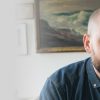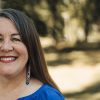Schools are open. Libraries are open. And, as always, librarians are teaching information literacy and research—it’s just all online.
Just as many misunderstand the role of teacher librarians (we are teachers who specialize in information literacy instruction), there is much misinformation about online instruction. True, being forced into online school with one week’s notice during a traumatic pandemic is not something any of us chose. The grief and anxiety of the pandemic is undeniable and impacts students and teachers alike. However, online instruction can still be meaningful and rigorous because it is designed and delivered by experts in pedagogy and content (teachers).
In fact, one of my favorite information literacy lessons was enriched and strengthened by the constraints of online learning. The classroom teacher and I were able to design a new assignment that also taught technology skills students would use for the final research presentation.
Normally, we start the year of 9th grade English with a research unit which includes a found poem assignment using one of the articles students find in their research. This is an assignment I adapted from my unit on Elie Wiesel’s Night from when I was an English teacher. Students create poems from language found in the memoir as an exercise in gathering evidence around themes in the book. My collaborating teacher liked this so much she asked me to lead students through this as part of her Night literature circles.
When schools closed in March 2020, before students could check out copies of Wiesel’s memoir, we had to pivot. The lesson invites students to connect to the primary document of the first-hand account of the Holocaust. After examining various archives, I suggested we use oral histories from the USHMM Holocaust Encyclopedia. In addition to being free to use, the user-friendly interface and the excellent cataloging of the oral histories into accessible portions, made it ideal over the many other databases of oral histories from World War II and the Holocaust.
To introduce students to the assignment, I revised my introduction to include a lesson on source types and to discuss primary sources. We also used lectures on the historical background prior to my lesson to brainstorm keywords they might search such as “Kristallnacht,” “ghetto,” or “rescuer.” The simple interface and filter options were a great introduction to what a database is and how we can limit searches, in this case to oral histories, with the students whose information searching experiences were mostly limited to Google.
Once we found the oral histories in the USHMM Holocaust Encyclopedia, we examined the artifacts to understand the different parts: the artifact itself (the video testimony), the title, the curator description, and the transcription of what was said in the video clip. Students used the video and its transcript to collect language to make their poems.
While I have a personal affinity for the poetry in the original translation of Night, in this assignment, students’ understanding and connection was supported by the variety of testimonies. In the reflection on the process of collecting language, many students commented on the power of hearing the person’s testimony, helping them to hear the emotion of the survivors. The transcripts facilitated the accurate collection of images and phrases for their poems’ content.
To demonstrate their learning, students created a slide containing their poem, a photo that illustrates the poem, citations for the poem’s sources and photo, and an audio recording of them reading their poem. The assembly required students to learn several skills that are also necessary for the final presentation in the research unit. First, students used what they learned about keywords and filters in searching the USHMM Holocaust Encyclopedia to find photos related to their poems.
To create citations for the poems and the photos, students had to identify the name of the artifacts used and copy those into a textbox in the slide and adjust fonts to make it a citation. They then had to find and copy the permalink to the artifact to hyperlink the artifact name to complete the citation. In doing so, they learned the importance of giving attribution to sources used to build the foundation for later lessons in MLA and APA citation styles.
Students used a simple online recorder or their personal device to record themselves reading their poems. In order to insert the recording, students learned how to add files to their Google Drive provided with their school emails and to share their files so that others within the school district could access it, but to still have it be protected from public access. This skill is important for them to become independent, digitally literate users of technology. From there, they were taught how to insert the audio file into the Google Slide and share the slide with the teachers.
In the original assignment, we would create a gallery walk in the classroom and library to share the poems. Each poem focused on a chapter so the gallery would also serve as a collaborative summary of the book. We wanted to recreate that in the digital realm so I compiled all the slides into one presentation. To facilitate organizing the slides in a meaningful way, I asked students to identify themes, keywords, or hashtags (a tool they are familiar with) for their poem and to put them in the speaker notes. This skill would be revisited when creating search strategies in the research unit.
At the end of the course, the teacher and I agreed this would be a permanent part of the information literacy instruction. Since this lesson builds foundational technology skills and citation skills, we decided to flip the order of units. Skills students would use again in the 10-week introduction to research unit and presentation include:
- Identifying keywords or hashtags;
- Using keyword searches and filters in a database;
- Identifying and choosing sources that satisfy student interests and assignment requirements;
- Citing sources;
- Creating links and sharing digital documents; and
- Using poetry to identify themes and gain deeper understanding of an issue through personal connection.
In the keynote speech for the California School Library Association Conference, noted author Avi, talking about writing historical fiction for children, stated, “[t]he larger picture can only be understood by understanding the smallest picture.” As we shared the compiled presentation with the class, each poem gave us a small picture through which we could create a deeper understanding of the whole.






